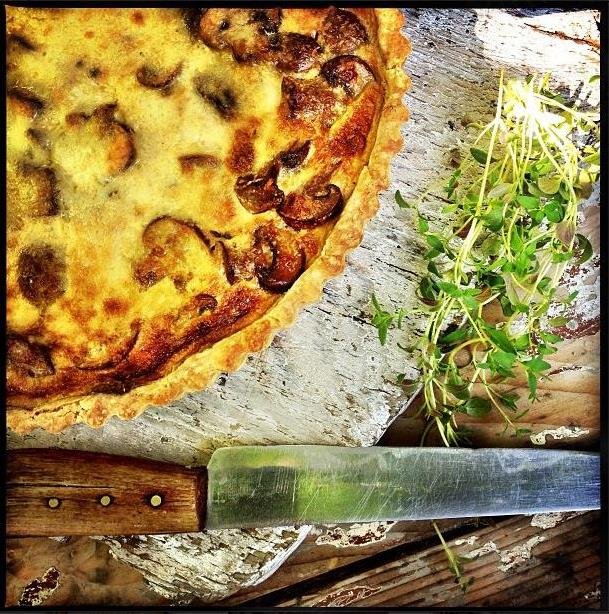So, not sure if I’ve banged on about it enough yet (!) but I have a proper recipe book coming out this month. 17th July to be precise, that’s this Thursday. I am very, very excited and feeling rather nervous too. To read all about it take a look here and also here for details of how many recipes are vegetarian friendly. Here’s the cover:

I have had a lot of contact from other bloggers and keen cooks asking how I went about getting my book published. I thought the best thing to do was tell you a little about the process that led to Recipes from a Normal Mum being published in the hope it may help someone else.
1) Get yourself an agent
The first thing you need is an agent. They are basically the facilitator between you and the publishers who actually commission the book. You agent is a combination of your friend and the hardest task master teacher you ever had at school. They should make you push yourself to the limit of your best ability.
Now it’s not always easy to get an agent to take you on. I was lucky in that I had been on the Bake Off and had also had success with self publishing my ebook. So the proof was already there for an agent to see. You can find a list of agencies who represent authors through the Writers and Artists Yearbook. Just to let you in on a secret of how long I’ve wanted to be a writer, I first bought this book in 1996. Yep, writing has been a lifelong obsession of mine.
Oh and by the way, just to confuse things, some agents only represent for literary work and others for any commercial work such as TV, radio, appearances etc. I am greedy and have a literary one and a non literary one. You need to like and respect your agent. Kind of goes without saying but if you don’t get it’s akin to having both a boss and colleagues you dislike. And unhappy people don’t tend to create the best work.
2) What if I can’t get an agent?
Well, it’s a tough world out there in agent and literary land. Some great writers struggle for years to get an agent to take them on. You can approach some publishers without an agent but the really great ones don’t tend to take submissions directly from authors. An agent tends to take about 15% of any money paid to the author for a book, but given there are no guarantees in getting work some agents work for years for no gain.
If you’re struggling to get an agent to take you on I would ask yourself a few questions – firstly do you feel your work is definitely commercially viable, as in, will it sell? You could be an amazing writer, but if your subject matter is too niche (100 prune recipes anyone?) an agent might be reluctant to take you on given you may not get a book deal, or even if you do, you may not sell many copies. Secondly – if you definitely feel there is a market for your work, push yourself to test the water. Think about self publishing a shorter story or smaller amount of recipes than the full book you have in mind and pop it on Amazon. See how it does. Get yourself a Twitter account, make a Facebook page and have a go at promoting your work. I honestly don’t think I’d have got a book deal without this blog and the ebook I self published and promoted through social media. Sometimes you just need to show people the proof.
3) Write a proposal
My literary agent must have been a dominatrix in a previous life. She’s such a hard task master. So it went a little something like this – she gave me a brief of what I needed to write into a book proposal. A bit of blurb about why the book was a good idea, who the target market might be, a bit about me and my background and then a chapter by chapter synopsis with 5 or so recipes fully finished and tested as a taster. Easy I thought.
So I diligently beavered away over about a week and sent her my little essay of a proposal. The email I got back was pretty blunt; she said I was on the right lines but a long way off. I think I re-wrote that proposal about 7 times over the next 4 months. Yes – it was a lot of work, and I admit to wanting to give up at times. But she was right, you really need to get the proposal spot on as you only get one chance of making a first impression. I feel like I lost a little bit of myself to that proposal, it was such a hard slog, but ultimately it worked.
4) Your agent sends the proposal out to publishers
This is the waiting game. Your agent sends out the proposal and makes a few phone calls to her publisher pal contacts, and then? Nothing. You sit about and wait whilst your proposal mostly languishes in some very important people’s inboxes. You call your agent every day, irritating the hell out of him/her. You start to consider self publishing again. You give yourself a stern talking to. You calm down. You decide that maybe book writing isn’t your path. Maybe you’re destined for other things?
Then you have 3 missed calls and an email saying ‘CALL ME IMMEDIATELY’ from your agent and you sit down, take a big gulp and make a phone call that changes your working life forever. What I am trying to say is that publishing does not work like a lot of industries. I worked in advertising where decisions regarding million pound campaigns were made over a couple of days. Publishing seems to be more considered shall we say. Unless you’re very famous like Jamie or Nigella in which case I am sure your proposals get snapped up in seconds. For the rest of us, it can be a bit of a waiting game.
5) You get a book deal!
So you have your book deal. It’s done! Or so you thought. Actually the contract needs to be ironed out, the money negotiated and lots of little things agreed. Will hair and make up be included in the costs covered by the publisher? Will they insist on a food stylist or will you cook and style the food yourself? How many photographs will be included? Will they all be colour? How many recipes will the book include? How many chapters? How many pages will the book be? When will it be published? Will the photos be shot on location or in a studio? All this needs to be agreed in writing before you get any money.
The first 3rd of your advance comes when you sign the contract, another 3rd when you send in the manuscript and the last 3rd when the book is published. For what it’s worth I was obsessed with every recipe having a colour photo and that the style of the book was real – in that I didn’t want the photos to look like something only a chef could achieve. (Anything else was negotiable for me including the cover which you’ll notice does not have my mug on the front – quite unusual for anyone who’s done the Great British Bake Off/Mastershef rounds.) So I made every recipe for the book in my domestic oven and everything was shot here at my house, with no food stylist or home economist to help. I even did all the washing up. We were blessed with lovely weather which is why the pictures may look more South of France than South Leicester.
6) You agree a photographer and a brief
Okay, so we’re all happy and everyone’s pleased to be working on the book. Next everyone needs to agree about a style of photography and art direction. The head Art Director and her/his team put together a brief and a mood board of images and make sure the author is happy with them. Then they get in lots of photographers books to decide who might be right for the job.
I was VERY lucky that David Loftus (him of best pals with Jamie Oliver and Pippa Middleton fame) agreed to take the photos for my book. I was a *little* nervous when he turned up to our semi for the first day of the shoot. David is photography royalty and I am a housewife from Leicester. My anxiety levels were pretty high. Here’s David looking dapper with Pippa:

7) You deliver the manuscript
Okay I may have got a bit ahead of myself… whilst the photographer is being searched for you have to actually write the book. You will be given a deadline and you must adhere to it. This is a deadline for final recipes and any extra writing describing the chapters and recipes – it must all be written perfectly. Ie/ the recipes have to work.
The recipes comes from a variety of places; some are memories of food eaten as a child, some inspired by amazing food eaten in restaurants or cooked by friends. Some ideas come from little comments I hear from adults and children alike. For example, the chocolate gingerbread barn birthday ‘cake’ idea came to me after hearing more than one parent complain their child didn’t enjoy their own birthday cake. The sad truth being that some (especially young) children don’t like cake that much – yet! I wanted to create a birthday centrepiece that they might enjoy that also looked visually appealing. A flat cookie just doesn’t stand up against a big chocolate birthday cake in my book – but a gingerbread barn complete with piggies, well, I think that’s a close contender.
I toiled pretty much night and day to make sure every recipe worked; it was a real labour of love. The relief when I pressed send on the manuscript was immense. To write a recipe book (and I imagine any book) you need to be tireless in striving for perfection. You’re pretty much working alone, there’s no one to jolly you along when a recipe goes wrong 8 times in a row. If you’re not good at being alone don’t write a recipe book.
8) Your editor edits
Every author has an editor who work for the publisher. They basically correct all your mistakes and make your writing the very best it can be. They read through any blurb you have written about a recipe and make sure it’s not too verbose, is accurate and doesn’t say anything that might make you end up in court! (They even make you get written permission from anyone you mention in the book or whose recipes you use.) They also spell and grammar check everything.
As for the recipes – well they don’t make them all, but there are special editors who deal with recipe books who can spot when there’s an egg missing or if an oven temperature looks wrong. But really, it’s up to you as the author. BIG names have recipe testers who will go through every recipe and correct it for them – some BIG names don’t even write the recipes themselves, they just give them their stamp of approval. People like me have to test recipes themself. That’s a huge responsibility and one I don’t take lightly. (I say that in my best and most serious school mistress voice.)
9) The photos get shot
The manuscript has been handed in, edited, corrected, primped and preened to within an inch of its life. The photographer has been booked. Next we need a shot list. Now my book was shot over 3 days at my home in Leicester with just me doing all the food buying, cooking and cleaning up. So yes, that’s about 33 recipes per day! And I have one oven and a small kitchen with 2 metres of clear work space.
How did I do it? By being unashamedly organised in a girlie swot style. It helped that the shoot days were staggered so I could spend 2 days prepping before each shoot. I was also obsessive about how I split the shot list. So at least half of each day was filled with shots of pre-baked recipes. It was still incredibly hard work. My back and legs paid for each day for up to a week afterwards. Wine may have been employed as a reward at the end of each shoot day.
As for David Loftus – he’s an incredibly nice man who works very hard, harder than most people do when they first enter a profession, let alone when they’re at the top of their game. I think the secret of his success is the combination of natural talent and the work ethic of an ox. He’s also quick. We had lots of props delivered for each shoot which were then laid out by the Art Director from the publisher. David would come along, move a few things about, point his camera and shoot. No lighting, no tripod, just a man and a (very expensive) camera. It was a joy to watch. It wasn’t such a joy when he then sat and waited for the next dish as I ran about like a headless chicken. He even found the time to take a few pics on his iPhone, yes his iPhone – using the Hipstamatic with his Loftus Lens. Here are some grapes from my garden. They were sour but look gorgeous, no?

And an apple from next doors tree that dropped on David’s head:

Oh and a quick shot of my Man Quiche from the book – a kind of meaty, manly mushroom quiche with no meat in it at all:

Just when you think it’s over you have to shoot the mug shots for the back of the book and for publicity. So a lovely hair and make up artist called Katy Short was called in (who happens to be the sister of one of my old colleagues) and frankly, she did something magical that may well be witchcraft. She worked all morning to make me look like this:

Amazing. She even got a shot of the complete and utter carnage that was my dining room. I have no idea who brought the fruit shoot along – possibly not David’s tipple of choice!

The photo shows the coffee and walnut cake being finished off as well as the mix it up muffins patiently waiting for their moment of glory.
(NB: All photos, apart from behind the scenes one, copyright David Loftus.)
10) You go on a diet
There’s a lot of spare food hanging about after a shoot. We gave a lot away, we froze as much as we could and we also ate a lot. I think the recipe development and shoot days resulted in 3/4 stone of extra weight for me – I’ve never been good at throwing food away. I never did quite get rid of the weight before getting pregnant in September. My third son was born mid June and I am ashamed to say I weighed myself 5 days after the birth to find I have 4.5 stone to lose. So I will be eating like a chic Parisian for the rest of the summer and hopefully my jeans will fit again by Christmas.
10) You correct the layouts
There’s more waiting and it feels like nothing is happening, but actually it is. Everyone is beavering away back at the publishing house. Then one day a huge envelope arrives for you with what I think are called ‘spreads’ – basically layouts of all the pages with the pics – a kind of huge floppy magazine style version of the book. You make a very large cup of tea and take a red pen and start to mark up any corrections you have. This is as close to being a teacher as I am likely to get and I found it very hard work. This is your last chance to get it right before it goes to print. Altogether now… silent scream!
11) You tell the world
After months of keeping your book secret you get to shout about it. So shout about it I did. I remember posting it on facebook and worrying maybe 3 people might like the news and I’d feel like a prize fool for thinking anyone might be interested in a book written by me. But they did like the news. People seemed very happy for me and it made me cry. It also went to number 1 in the Amazon charts by that weekend. That made me cry too. (Pregnant hormones have a lot to answer for.)

12) A copy arrives in the post and you cry
13) You cross your fingers very very tight and hope and pray
It’s all very well and good getting likes on facebook and retweets on Twitter but if no one buys the book then really, all this work will have been for nothing. So I have been making pacts with myself. If the book does well I’ll never shout again/always be kind to strangers/give way to any car who looks in a rush/only eat sitting down at a table/be a better wife and listen to my husband’s day properly.
So how long did all this take? About 18 months from proposal to publication. A true labour of love.
I really hope you enjoy the book. If you do buy it and you do like it please do leave a review on Amazon by clicking here. It would mean the world to me and it would help someone else decide if they fancy buying it too. Thank you.












 Holly Bell
Holly Bell 